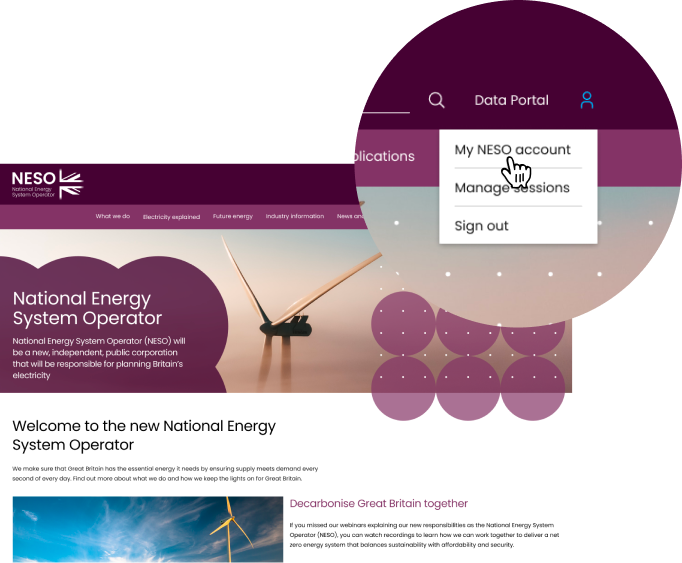SIF R3 Discovery - Fractal Flow (Partner)
Project summary
DNOs require an innovative solution to accelerate net zero targets due to physical capacity constraints.
| Name | Status | Project reference number | Start date | Proposed End date |
|---|---|---|---|---|
| Fractal Flow | Live | NPG_SIF_008 | Oct 2024 | June 2025 |
| Strategy theme | Funding mechanism | Technology | Expenditure | Third Party Collaborators |
|---|---|---|---|---|
| Data and digitalisation | SIF Discovery - Round 3 | Active Network Management | £163,066 | Frazer-Nash Consultancy |
A current solution to address this issue is via Active Network Management. However, information constraints and conflicting requirements can inhibit its adoption.
We will develop a tool which provides clear visibility of fractal network power flow, via a centralised vendor agnostic system to bind data-streams to a virtual network structure, while bridging various communication protocols.
This system will help unlock additional capacity by providing clearer status visibility and explore integration of powerful machine learning analysis and targeted data exchange across a Grid Supply Points (GSPs).
Innovation Justification
No current system integrates, visualises, and aggregates power flow across ONO networks or facilitates data exchange between ESQ and ONO layers. Existing products like Strata Grid might tie a network to a specific platform, risking obsolescence and single vendor dependency during for DSO transitions and future ESQ requirements.
A key challenge is diverse communication infrastructure and data formats between nodes and network layers, as seen in past innovation drives [ABCD, NG] and [ANM Good Practice Guide, ENA]. We will deliver a future-proof tool with supplier agnostic interfaces to unify previous innovation activities, to support the entire network.
Synchronizing communication protocols is also challenging, especially for legacy assets, underscoring the need for a vendor and protocol-agnostic approach.
Based on market trajectory, local flexibility markets are anticipated. We will develop a future-proof tool to centralise understanding of sub-network power generation characteristics and help unlock these new market services, while providing powerful data analytics to support customers and new connections.
Our creative Graph Networks usage establishes a robust data infrastructure, binding data-streams to a virtualized network structure. This novel data science application offers a fractal-level view of power and network control parameters, featuring data aggregation and a platform for innovative Machine Learning Functionality. This includes projected reliability of generation asset clusters through weather API calls, explored in later project phases. The new data structure facilitates GSP data-exchange between DNOs and ESO.
Adoption of a Graph Network will allow for the integration of innovative features supported by Machine Learning such as:
• Node prediction - optimizes network planning and informs generators and customers about nodal trends.
• Missing Link -- derives performance from associated network connections in case of communication loss.
• Similarity Analysis -- groups similar subgraphs, assessing sub-system performance, identifying systematic issues, and suggesting performance improvements.
• Risk Monitoring -- uses tailored KPls to evaluate network risks in specific areas.
Moving from Technology Readiness Level 2 to 4 is estimated for Discovery.
Moving from Integration Readiness Level 1 to 2 is estimated as required data relationships between GSP and networks nodes are identified
Determining Commercial Readiness Level forms a key objective for the project, as the tool could benefit power networks worldwide.
Provision of a future-proofed tool with supplier-agnostic interfaces represents a major step change in the operational and control capability of the whole network.
Impacts and Benefits
Electricity network limits hinder the integration of Low Carbon Technology (LCT) , constraining renewable energy availability for customers. Restricted operational information leads to conservative decision-making
These conservatisms and existing ANM control dynamics result in systemic inefficiencies and operational expenses that are absorbed by customers; e.g. ESQ action balancing measures and an ANM operates to exploit network headroom, negating the said measures.
The following metrics shall be used within the CBA to report on this position:
• Headroom (MW)
• Generation that can be installed (MW)
• Additional Energy of enabled low carbon generation (MWhr)
| Name | Published |
|---|---|
| Project Management Book R3D Final | 06 Aug 2024 |
| FNC 023283-145816V Fractal Flow Show & Tell | 06 Aug 2024 |
| FNC 023283-144763V_SIF CBA_Fractal Flow Discovery | 06 Aug 2024 |
| FNC 023283-144388V - Fractal Flow WP Deliverables | 06 Aug 2024 |
| SIF Round 3 Project Registration | 15 May 2024 |
